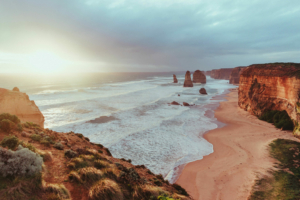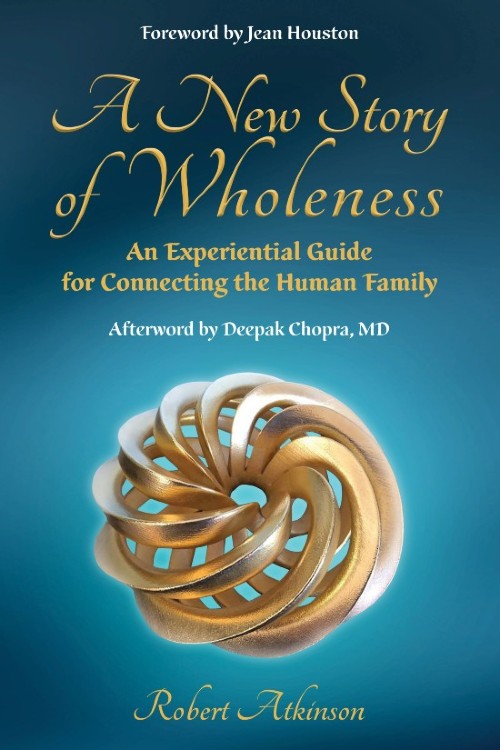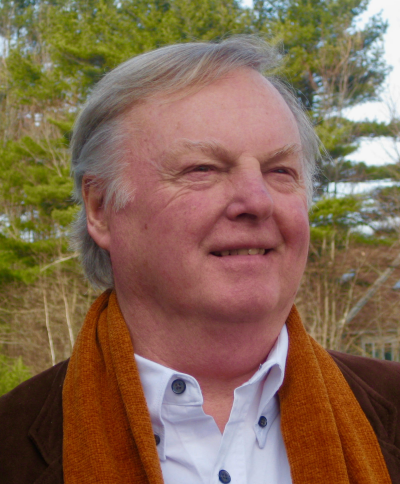Highlighting Australia
- As a proudly Australian initiative, we’re excited to showcase a collection of Australian stories, music, tributes and more.

Join activities, celebrations, study groups, spiritual empowerment and education programs for young people, and more.
Baha’i beliefs address essential spiritual themes for humanity’s collective and individual advancement. Learn more about these and more.


I think creativity is incredible: you can literally make something out of an idea, out of thin air. Of course there’s a lot of effort involved, but a new thing is made where it didn’t exist before. And because I love to read, I’m always impressed with writers and their creations.
Robert Atkinson has just published a book called A New Story of Wholeness: An Experiential Guide for Connecting the Human Family. In this post, he tell us all about it!
Can you tell us a little bit about A New Story of Wholeness?
The book is built upon the three interconnected principles of evolution, consciousness, and wholeness, which help us heal from the illusion of separation. It is framed by a three-part pattern that helps us find connection in apparent randomness.
We are born with this pattern embedded in our unconscious and become aware of it as archetypal experiences common to all humanity begin to emerge through our own life experiences. The pattern guides our evolving consciousness, transforms our lives, keeps our focus on the wholeness of all things, and keeps humanity on its evolutionary path.
This quote from Abdu’l-Baha is the foundation for the entire book:
The evolution of existence is one. The divine order is one. All beings great and small are subject to one law and one order. – Some Answered Questions, 199
In this divine order, reality is one, all things are interdependent, and nothing is ever separate from the whole. This provides a framework for understanding wholeness as experienced in the qualities of completeness, harmony, balance, and unity within all parts of a whole.
What inspired you to put this book together?
This book is a synthesis of a lifetime of work in mythology, mysticism, storytelling, and psychology. In Mystic Journey, I explored The Seven Valleys by Baha’u’llah as a model of the journey of the soul through the valley of search to the realization of the inherent unity and wholeness of all things. In The Gift of Stories and The Story of Our Time, I wrote about how mythology, as seen through the mono-myth, or the journey of the hero, as well as rites of passage, express variations on this same pattern of transformation.
The popularity of Joseph Campbell’s Hero with a Thousand Faces created a gender-based split between the way the “hero’s journey” and the “heroine’s journey” were understood, with a separation of potentialities and archetypes into masculine and feminine categories. This separated what we all have access to as human beings.
So, I wanted to write A New Story of Wholeness to show how all these variations on a universal, timeless pattern of transformation share a deeper commonality. This book removes the boundaries and re-unites all these into a single journey that returns us to our inherent wholeness, and a unitive consciousness.
It was written to provide a roadmap for living into the wholeness we were created with. It is built upon a blueprint, or process of transformation, that leads directly from inner transformation to social transformation.
My understanding is that the book is a guide, complete with exercises. Can you tell us a little about how the guide is carried out?

The second half of this book is a guide to living and writing our story of wholeness focusing on the personal experience of living this timeless pattern of transformation. It includes a personal example of this story of transformation, keys for the process, reflective writing exercises with prompts and all the needed step-by-step worksheets with the archetypes and motifs for writing your own story of living into wholeness. The book is designed to be carried out as a do-it-yourself workshop, with all the guidance needed to write your own story of what led you to a recognition of unity, oneness, and wholeness. The result of this process is recognizing the interdependence of individual and collective transformation.
Who is its audience?
Everyone! Everyone who is interested in why the mysteries of life inspire us to want to know more; everyone who wants to understand the nature of evolution, the nature of consciousness, and the nature of wholeness; everyone who wants to heal from the illusion of separation, everyone who wants to move beyond the apparent randomness of chaos and confusion to find the order, harmony, and unity that connects us all; and, everyone who seeks meaning and purpose in life.
What was something you learned in the process of compiling this book?
One thing that became much clearer to me is how the meaning of the mystic journey of the soul so eloquently described in The Seven Valleys is carried throughout the Writings of Baha’u’llah. This essential process of transformation is expressed very vividly on both the individual and collective level at the same time in this quote about the health of the body:
Regard the world as the human body which, though at its creation whole and perfect, hath been afflicted, through various causes, with grave disorders and maladies… The mightiest instrument for the healing of all the world is the union of all its peoples.
Wholeness is the remedy for an ailing humanity, as well as for what ails us individually. All parts of the whole were created whole and perfect, to work in harmony and balance with all other parts of the whole. With all the afflictions and maladies that we experience in life, transformation is what returns us to our original wholeness. And in this process, cooperation is the overriding principle governing the functioning of the whole.
What do you hope your readers will take away with them long after they’ve finished reading?
Beyond the reflective writing exercises in the guide that will initiate much ongoing inner reflection, there are many important implications of Wholeness, of seeing reality as One, and all things in the entire creation as interconnected, that could also stimulate much ongoing reflection.
Maybe most important are the implications of being created whole and perfect, as Baha’u’llah says in the quote above. Within this quote, the pattern of personal and collective transformation is decoded as a process of wholeness followed by disorder followed by wholeness. In the book, this process is explained in depth as call to wholeness followed by the path of purification which leads to a return to wholeness.
Baha’u’llah assures us that we were created whole and perfect, and though we undergo afflictions and disorders, or trials and tribulations, we are destined to return to our original state of unity and wholeness.
Here are some of those implications to ponder and meditate on often: IF we are created whole and perfect, THEN our true nature is whole and perfect creations. IF we are created whole and perfect, THEN wholeness is perfection and perfection is wholeness.
IF wholeness is perfection, THEN perfection is the completeness, balance, harmony, and unity we were created with. IF we are created whole and perfect, THEN the purpose of life is to live into the true nature of who and what we really are, the embodiment of wholeness and perfection.
Thank you, Rob, for taking the time to share this with us!
You can purchase A New Story of Wholeness from a variety of book retailers such as Amazon.
"*" indicates required fields

We recognise their continuing connection to land, waters and community. We pay our respects to Aboriginal and Torres Strait Islander people and their cultures; and to elders both past and present.
The views expressed in our content reflect individual perspectives and do not represent authoritative views of the Baha’i Faith.

Visit the site of the
Australian Baha’i Community
and the Baha’i Faith Worldwide
Notifications